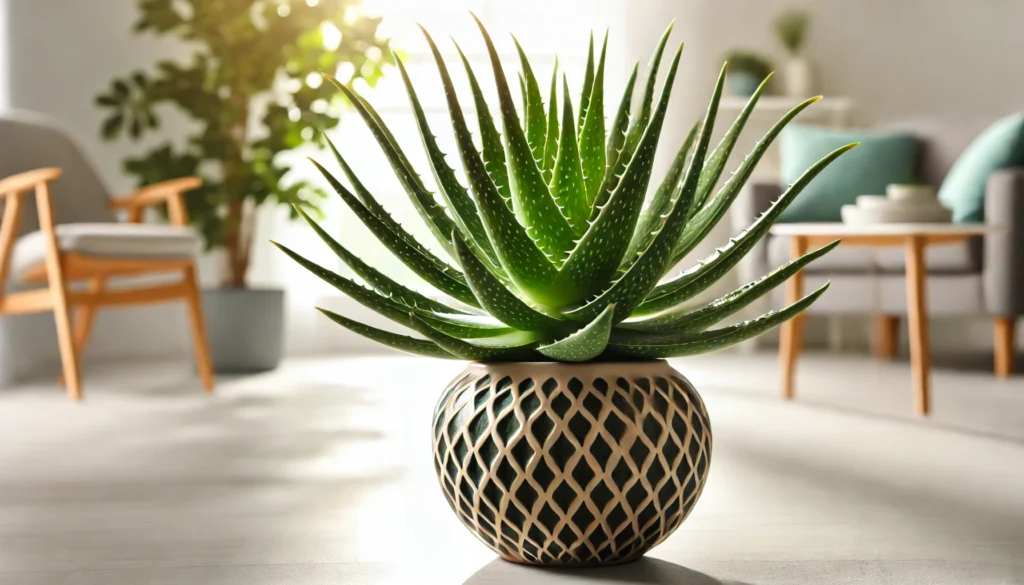
The Pygmy Date Palm (Phoenix roebelenii) is a small yet elegant perennial palm that is perfect for both indoor and outdoor settings. Known for its feathery, arching fronds, this plant can grow up to 10 feet tall (3 meters) when mature, although it often remains smaller when grown indoors. Its graceful appearance and manageable size make it a popular choice for adding a tropical vibe to various spaces.
History and Ideal Growing Conditions
Native to Southeast Asia, particularly Laos and Vietnam, the Pygmy Date Palm has become a favorite among gardeners and landscape designers worldwide. It thrives in USDA hardiness zones 9 to 11, making it ideal for warm climates. Outdoors, it enjoys full to partial sun, but when grown indoors, it prefers bright, indirect light. The Pygmy Date Palm does well in well-draining soil, making it versatile for both containers and garden beds.
Toxicity and Pets
While the Pygmy Date Palm is generally considered non-toxic to pets, caution is still advised. Some reports suggest that the sharp spines at the base of the fronds can cause irritation if pets or children come into contact with them. For those concerned about pets, consider these pet-friendly alternatives:
Safe Alternatives
- Areca Palm (Dypsis lutescens)
- Parlor Palm (Chamaedorea elegans)
- Spider Plant (Chlorophytum comosum)
Best Practices for Caring for Pygmy Date Palm
Caring for the Pygmy Date Palm is relatively simple, as this hardy plant is fairly low-maintenance once established.
Watering and Humidity
Pygmy Date Palms prefer moist soil but can tolerate short dry spells. Water your palm when the top inch (2.5 cm) of soil feels dry, ensuring you do not let the soil dry out completely. When grown indoors, they thrive in average household humidity, but misting the leaves occasionally can help, especially in drier environments.
Soil, Light, and Temperature
Pygmy Date Palms do best in well-draining soil, such as a mix designed for palms or tropical plants. They need bright, indirect light indoors, and if grown outdoors, they prefer full sun or partial shade. Ideal temperatures range between 70°F to 85°F (21°C to 29°C), but they can survive short periods of cooler temperatures down to 30°F (-1°C). However, prolonged exposure to cold can damage the plant.
Fertilizing
Fertilize your Pygmy Date Palm once a month during the growing season (spring and summer) with a balanced, slow-release fertilizer. Palms can be sensitive to salt buildup, so flush the soil occasionally by watering thoroughly to prevent fertilizer salts from accumulating.
Common Problems and Remedies
Pygmy Date Palms are generally easy to care for, but they can experience a few common problems such as brown leaf tips, yellowing fronds, or root rot. Brown tips often indicate low humidity or over-fertilization, while yellowing leaves may suggest a lack of nutrients. If root rot becomes a problem, it is usually due to poor drainage or overwatering, so adjust watering practices accordingly.
Pruning Pygmy Date Palm
Pruning your Pygmy Date Palm keeps it looking tidy and helps promote healthy growth. The best time to prune is during spring or early summer when the plant is actively growing.
Tools Needed
Use sharp, clean pruning shears or loppers to prune your palm. To avoid spreading disease, always sanitize your tools before and after pruning by using a solution of one part bleach to nine parts water.
Identify Areas to Trim
Remove any yellow or brown fronds at the base of the palm. Cut as close to the trunk as possible, without damaging the plant. Trim only damaged or dead fronds and avoid over-pruning, as the plant relies on its leaves for energy production.
Deadheading and Pruning Leggy Growth
Pygmy Date Palms do not require deadheading, but trimming leggy growth helps maintain a more compact and attractive shape. Be cautious not to remove too much foliage at once, as this can stress the plant.
Remove Damaged or Diseased Leaves
Cut away any fronds showing signs of damage or disease. These should be disposed of away from your garden to prevent spreading any potential issues.
Shape the Plant
After removing dead and damaged leaves, focus on shaping your palm to maintain its natural arching fronds. Remove only the necessary amount to avoid giving the palm a sparse appearance.
Post-Pruning Care
Water the plant thoroughly after pruning to help it recover. Keeping the soil moist (but not waterlogged) will support new growth. Ensure your plant receives adequate light and humidity to promote healthy recovery.
Propagation and Benefits
The Pygmy Date Palm can be propagated through seeds, although this process requires patience as palm seeds can take several months to germinate. Once established, the plant adds a touch of tropical elegance to any space. Outdoors, it provides shade and wind protection, while indoors, it can help purify the air. The plant’s slow-growing nature also makes it a great option for container gardening.
Final Thoughts
The Pygmy Date Palm is a versatile, elegant plant that brings a tropical feel to both indoor and outdoor spaces. With proper care, it can thrive for many years, providing beauty and shade wherever it is placed. Its manageable size, combined with its graceful appearance, makes it an excellent choice for gardeners of all skill levels.



